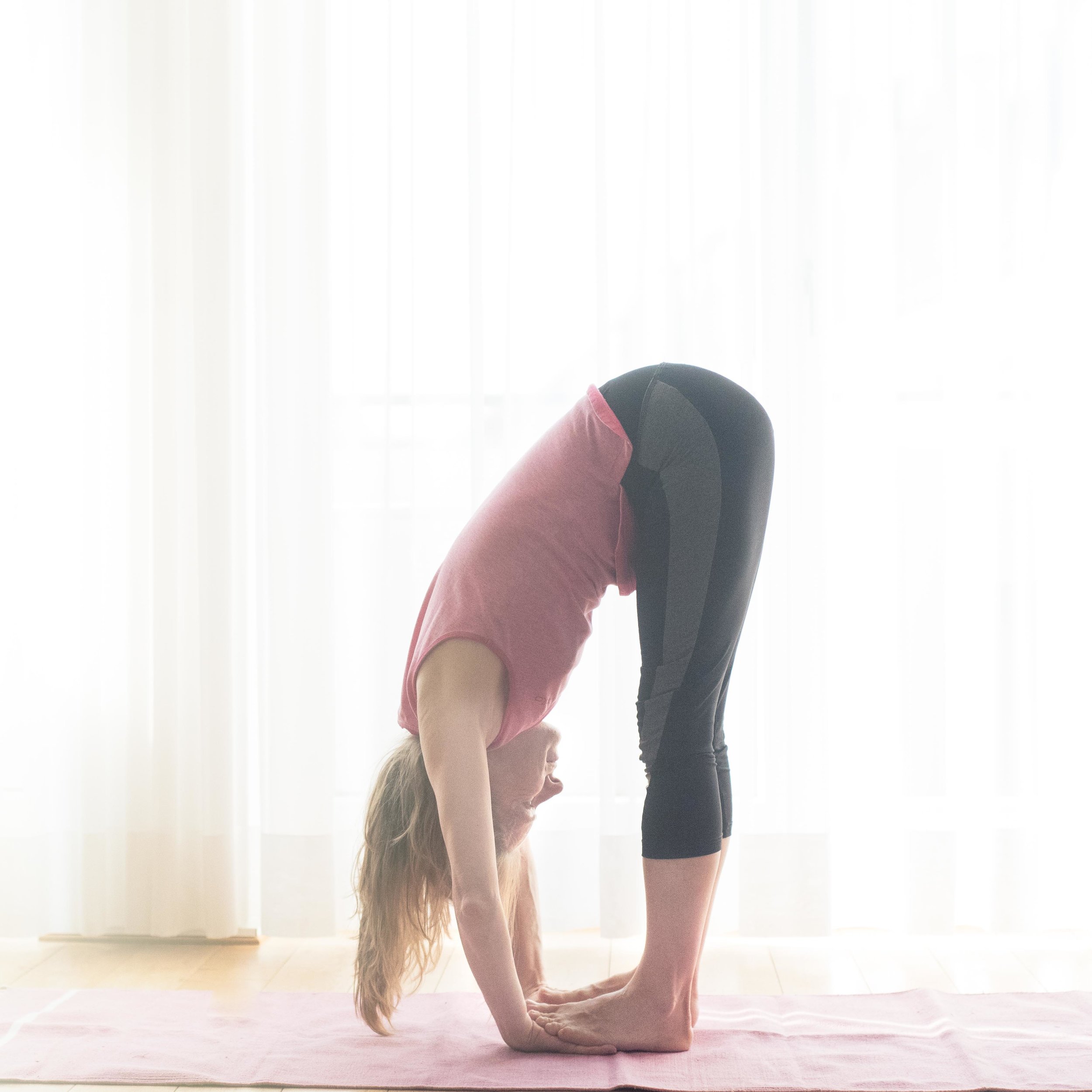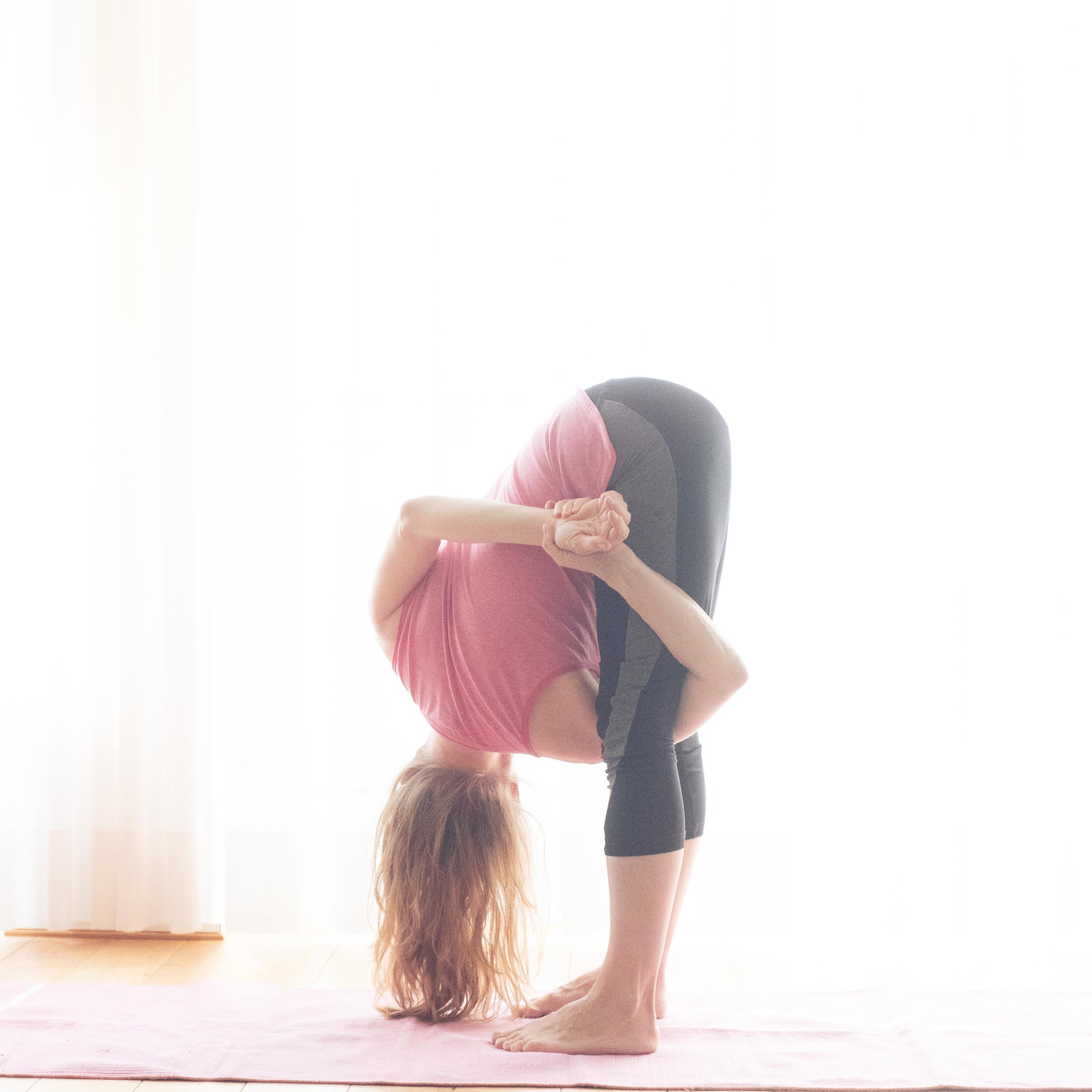The first asana is uttanasana. It Sanskrit it means ‘intense stretch’.
The second asana is called hasta padanghustasana. It means ‘hand-toe stretching’. Hasta means hand. Pada means foot and anghusta means big toe.
The third asana is called pada hastasana, which translates ‘hand-foot posture’.
The asanas are rather similar, yet also different.
The pictures show me that there is still potential. Yet when I started with yoga I could scarcely touch the floor with my fingers when my legs were stretched.
Lately I improved all the forward bending asana. I let gravity do the work. The crucial difference was the time. I hang in the following pose for 5 minutes.
M legs are slightly bent and I hang forward. It’s important not to move. One can close the eyes, it’s OK to open the eyes. The hands shall not touch the floor. Gravity does the work. Exhaling shall be much longer than inhaling, because it helps to relax. Only a relaxed body is able to stretch. The nerve system must feel save. The most important point is: Stay in this position for five minutes. This makes the difference. Progress will come fast.
Many people sit all day long. Nevertheless it becomes more and more difficult also for those with a sedentary life to bend forward when getting older. I’m sure, that people who bend forward every day in the above way will be able to do this till the age of 100. They won’t need a person who helps putting on shoes. Staying flexible gives independence. What a gift.
To bend forward is also an inversion for those who don’t like to do headstand for whatever reason. Sometimes health issues prevent people to do poses.. The heart is above the head in this forward bending asana. This is the criteria for an inversion. This pose is refreshing and energizing.
All stretching asanas help to become patient. Yet practicing correctly helps to progress faster.







